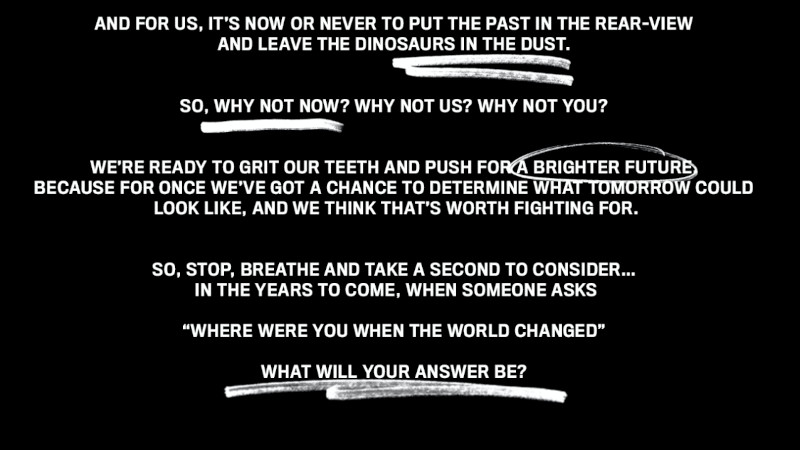
When you’re building yourself a website, there are two key things you need to worry about – the visuals and the words. If you’re a photographer or videographer, you’ve almost certainly got the visuals covered! Given that you’re at the point where you’re making a website to show off what you can do, we’ll take it as read that you’ve got enough striking imagery to fill its pages (and if you don’t, then our first tip is to go off and get that).
But you may not be so confident on the words – and there’s no shame in that! Not everyone who has invested time in learning how to make fantastic images has also had time to learn how to write, edit and proofread to a professional standard. That’s fine! That’s why we’re here to help.
If you’re worried about how to strike the right tone for your website – how to write copy that will explain to viewers, and potential clients, what you’re all about, without boring them or bogging them down in needless detail, then we’re here to help. Using professional photographers as our case studies, we’ve boiled it down to five top tips for nailing tone of voice for your photography or video brand.
Tone of voice tip #1 – Know your audience
This is the most important piece of advice, and it’s the thing to nail down right away. When you’re writing copy for your photography or video website, the thing you should always have in mind is who you’re talking to. Are you pitching yourself to corporate clients for editorial or advertising work? Are you pitching yourself towards other photographers who might be interested in signing up for a workshop with you? Or, are you just chatting with like-minded folks who might be interested in seeing your images?
Let’s look at a couple of examples to illustrate the point. First, here’s some of the first copy you see when visiting the website of the portrait and celebrity photographer Rankin:
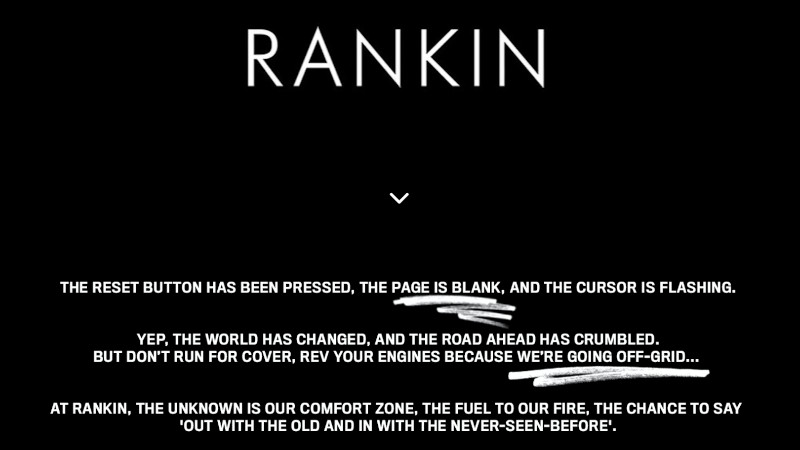
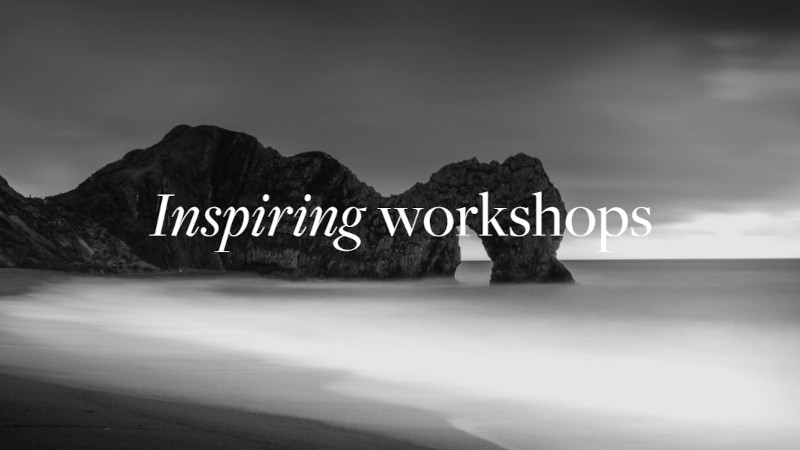
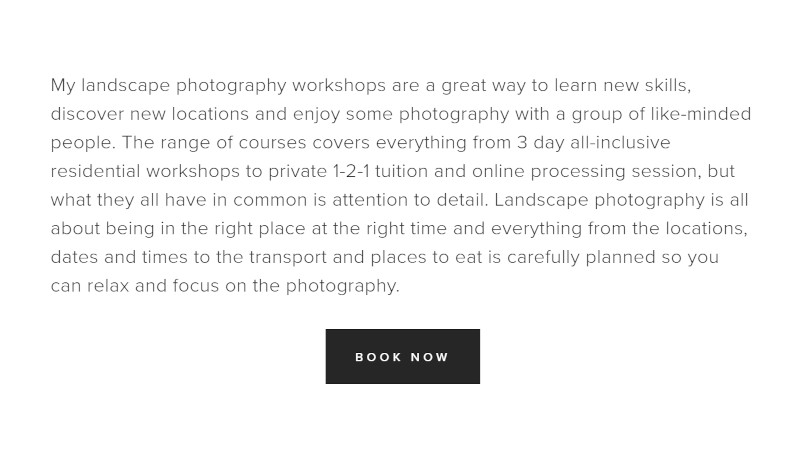
Both these people are, fundamentally, men with cameras. But the tone of the copy couldn’t be more different, and that is because they are talking to different audiences.
Rankin is known for his striking, in-your-face style of portrait photography that contrasts with the generally quite sedate, flattering look that characterises celebrity portraiture. So it makes sense that the copy on his website would reflect this – would do something unexpected, strike a surprising tone. He’s talking to prospective clients who want a photographer who thinks differently – probably famous people or those who work for them.
Minns, meanwhile, runs landscape photography workshops in the English countryside. He’s talking to photographers of a range of abilities, some of whom may not have really used their cameras before, and assuring them that he’s a safe pair of hands with whom they’re going to have a comfortable and productive time.
It would be deeply weird if Minns advertised workshops by describing how he’s going to warp your fragile little mind in never-before-seen frontiers of landscape photography. And it would be equally strange if Rankin pitched himself to celebrity clients by assuring them the chairs in his studio are comfortable and the coffee is always fresh.
This is an extreme example. But the reason these completely different tones of voice are both effective is that both photographers understand who they’re talking to.
Before you start writing so much as a word, it’s worth taking the time to think about who you’re writing for. Then, once you’re done, read it again, and try to imagine that kind of person reading it. Do they understand where you’re coming from? Are they excited to work with you?
Tone of voice tip #2 – Less is more
If you’re not very confident at writing, then the best advice we can give you is to do as little of it as possible!
We’re going to invoke William Shakespeare here, and remind you that “brevity is the soul of wit.” Now, granted, the old Bard did say that in a play that’s more than five hours long, so context is important here, but the essence of the statement is that fewer words can be much more effective than lots of them.
If you by necessity have a lot to say about your photography – e.g. you run lots of different types of workshops in lots of different areas of the UK – then you’re going to have to write a fair number of words, and there’s no getting around that. However, the number-one mistake that nervous writers tend to make is overwriting. A concept as simple as “I’m a landscape photographer who mostly works in Cornwall” can easily be stretched over multiple paragraphs by an inexperienced writer – and it really doesn’t have to be.
Let’s look at the about section for the website of London-based fashion and portrait photographer Hanina Pinnick:

“shooting london’s fashion & faces”
That’s it. Pinnick tells us everything we need to know about her in four words and an ampersand. But attention has still been paid to the tone of voice here – the short and spiky nature of the statement lets us know that she is a photographer whose style is direct and to the point (you can read the portrait tips article she wrote for the Wex blog here). It’s also all in lower case, which is a common form of expressing oneself on social media. Again, this informs us of the type of photographer she is.
This style isn’t necessarily right for everyone. Documentary photographer Martin Parr has a website full of floridly written blogs and pages, all in correct formal English. That works for his essay-like mode of documentary photography, just as Pinnick’s brevity works for her.
The golden rule is that less is more. So while you may need more words than Pinnick to explain what you and your photography are all about, trying to do so in as few words as possible is a very smart way to go about it.
Tone of voice tip #3 – Proofread (or get a proofreader)
This is a quick tip, but an important one. Whatever tone of voice you’re going for, the unfortunate reality is that it won’t come across if your copy is riddled with spelling errors, double spaces, rogue capitalisation (e.g. “My name is Jeff and I’m a Landscape Photographer who exclusively works in Black & White”) and badly constructed sentences.
If you’re a good proofreader, check your copy, then check it again. Print it out – it’ll look different on paper than it does on the screen – and read it a couple more times. Read it again after you’ve launched the website; there’s no faster way to spot a typo in something than to publish it for public consumption. (I've read over this blog several times, and there are probably still typos in it. Do not email me about this.)
If you’re not a good proofreader, then sometimes it’s best to just throw money at the problem. Consider paying someone to give your copy a once-over. It’s not hard to find a good freelance proofreader online, and the amount of copy for your website will likely be no more than a few hours’ work for them, so it shouldn’t cost too much.
Tone of voice tip #4 – Keep it consistent (including social media)
Once you’ve settled on a particular tone of voice for your brand, it’s important that you don’t let it slip – and this goes for social media as well. If you’re, say, a serious and artistic wedding photographer, and your website is written with a tone of competent professionalism, then your Instagram should not be full of crude jokes and f-bombs.
Of course, you might be pitching yourself as a less conventional, more informal wedding photographer, who’s focused on making sure the couple has fun on the day and getting images full of joy and character. In which case, crude jokes and f-bombs would probably be fine! Indeed, a dry and unfunny Instagram presence would probably undercut that pitch. Either is okay! The key thing here is consistency.
Hannah Couzens is a talented portrait photographer who has built her business from the ground up and now teaches others her techniques. Her website reflects this really well – it’s personable, accessible and packed with information.
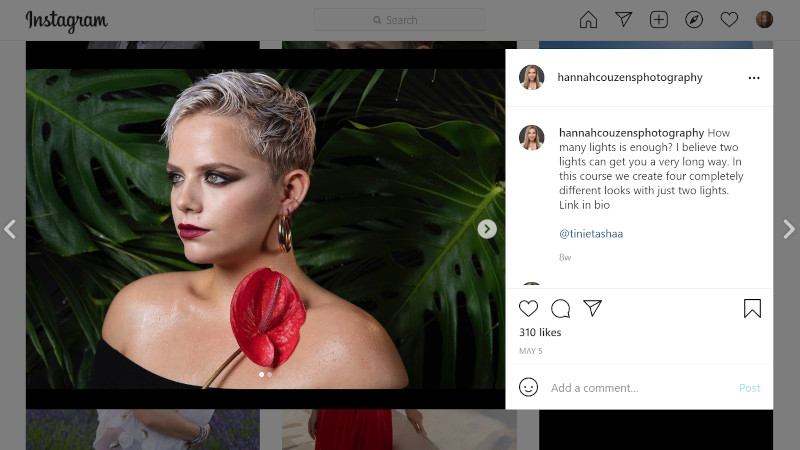
Head over to Couzens’ Instagram, and you find a good deal of consistency. The tone of the caption here is friendly, but not overly jokey. It’s clear, direct and to the point, with a concise call to action. And, of course, the fact that it’s paired with a great image doesn’t hurt either!
Remember – the tone you settle on for your brand should carry over to your social media. If you simply must post jokes and memes that don’t fit your brand, consider making a private Instagram or Twitter account where you can scratch this particular itch without putting off clients.
Tone of voice tip #5 – What’s your one, key message?
It’s easy to get lost in the woods when writing about yourself and your work. We mentioned earlier that the biggest error that less confident writers tend to make is overwriting – producing too many words because they’re worried they won’t express what they want to express.
Everything we’ve discussed so far – knowing your audience, keeping it brief, keeping it sharp and keeping it consistent – is all built around one key idea. What is the one thing you want people to take away once they’re done reading your site?
It might be that you’re an iconoclastic portrait photographer, a friendly landscape tutor or an inventive young fashion shooter. Whatever it is, write it down in as few words as possible, and stick it to the top of your monitor. Make it your desktop background. Whatever works for you. And then, when you come to write a new piece of copy, look at this statement, and ask yourself if this copy is communicating this idea. And if it isn’t, change it!
Summary – our 5 top tips for nailing tone of voice
To wrap up, let's quickly run through the key points of establishing and maintaining the right tone of voice:
1. Know your audience
Always keep in mind the type of person you want to be reading your content, and write for them.
2. Less is more
You don't need a whole lot of words if only a few will do! Get to the point, and your readers will thank you for it.
3. Proofread (or hire a proofreader)
Your tone of voice won't come across if your text is difficult to parse, or if your writing looks amateurish. Either double-check it yourself, or pay someone to do it for you. It's worth it, we promise!
4. Keep it consistent (including social media)
It doesn't matter exactly what tone you select, but making sure it's consistent across all platforms is absolutely critical.
5. Nail your one key message
Finally, boil down the one thing you want people to take away from what you're writing. And then ask yourself if you've accomplished that. If you haven't, it's time for a rewrite!
Websites featured: rankin.co.uk, justinminns.co.uk, haninastudio.com, martinparr.com and hcphotography.co.uk.

